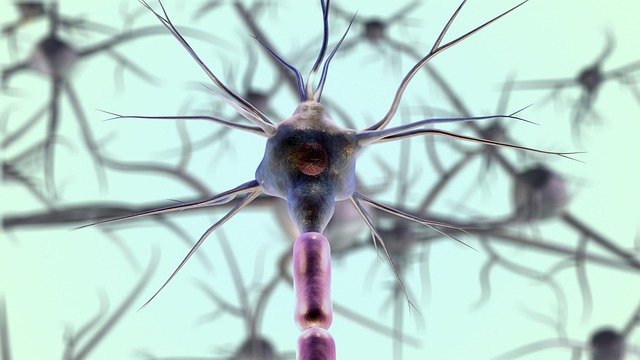For someone using a prosthetic, moving the hand is only half the story. The real challenge is making that movement feel natural—smooth, responsive, and connected to the brain’s intention.
Traditional prosthetics often require extra effort. Users must think hard, adjust manually, or watch their hand to be sure it’s doing what they want. This makes control tiring and far from seamless.
Real-time neural adaptation changes this. It allows the prosthetic to learn and adjust instantly, syncing with the user’s brain signals as they happen. The result is movement that feels less like operating a machine and more like moving a part of the body.
At Robobionics, we see this technology not as a dream, but as a reality taking shape. It is the bridge between human thought and mechanical action, and it is transforming how people experience their prosthetics.
In this article, we will explore how real-time neural adaptation works, why it is so important for seamless bionic control, and how it is reshaping the future of independence and dignity for prosthetic users.
What Real-Time Neural Adaptation Means in Prosthetics
The Brain’s Language
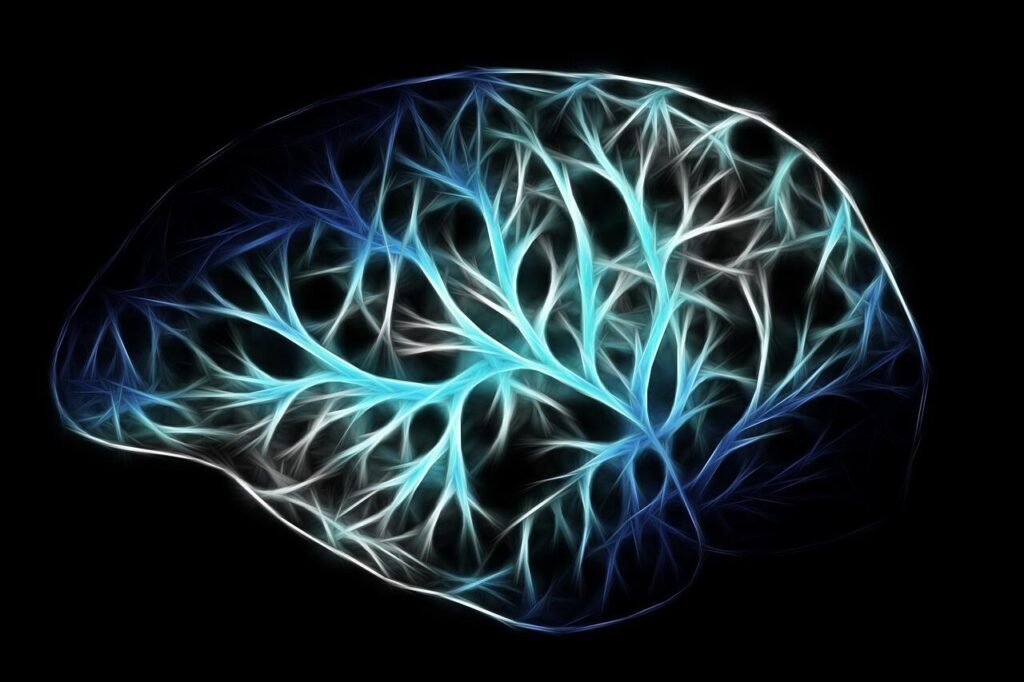
Every movement starts in the brain. Neurons fire, sending tiny electrical signals to muscles. Even after a limb is lost, these signals still exist in the residual limb.
Real-time neural adaptation is the process of capturing these signals, translating them into commands for a prosthetic, and continuously adjusting based on feedback—all within fractions of a second.
It’s not just about reading the brain once. It’s about staying in constant conversation with it.
From Command to Control
Older prosthetics often worked on fixed rules. One muscle twitch meant “open,” another meant “close.” This was functional, but rigid.
With real-time neural adaptation, the system doesn’t just follow fixed rules. It studies the patterns of the signals as they happen. If the signal shifts due to fatigue, stress, or even small changes in electrode position, the prosthetic adjusts instantly.
This allows movements to feel smooth and consistent, rather than forced.
The Feedback Loop
Real-time adaptation also depends on feedback. The prosthetic doesn’t just act—it responds. Sensors in the device measure grip, force, or motion, and send that information back to the brain through vibration or pressure.
The brain learns from this input, adjusting its own commands. The prosthetic, in turn, learns from the brain’s changes.
Together, this creates a closed loop of constant refinement. Each side adapts to the other in real time.
Why Real-Time Adaptation Matters
Precision in Everyday Tasks
Daily life is full of subtle actions—buttoning a shirt, typing on a keyboard, or pouring tea into a cup. These require delicate adjustments, not just simple open-and-close motions.
Real-time neural adaptation allows the prosthetic to handle these nuances. It adjusts grip strength, speed, and positioning based on live brain signals.
This makes daily life smoother, reducing the need for constant corrections or visual checking.
Building Trust
For many users, the hardest part of using a prosthetic is trust. If the hand feels unpredictable, they hesitate to use it in important situations.
Real-time adaptation reduces this uncertainty. The hand feels responsive and reliable. Users can depend on it to behave the way they expect, even as conditions change.
Trust builds confidence. And confidence is what leads to long-term use.
Reducing Cognitive Load
Without real-time adaptation, controlling a prosthetic is mentally exhausting. Users must consciously focus on every signal and double-check every action.
When the prosthetic adapts on its own, much of this effort disappears. Control feels natural. The brain can shift attention back to living, not managing.
This mental freedom is just as valuable as physical control.
The Technology Behind Real-Time Neural Adaptation
Signal Processing
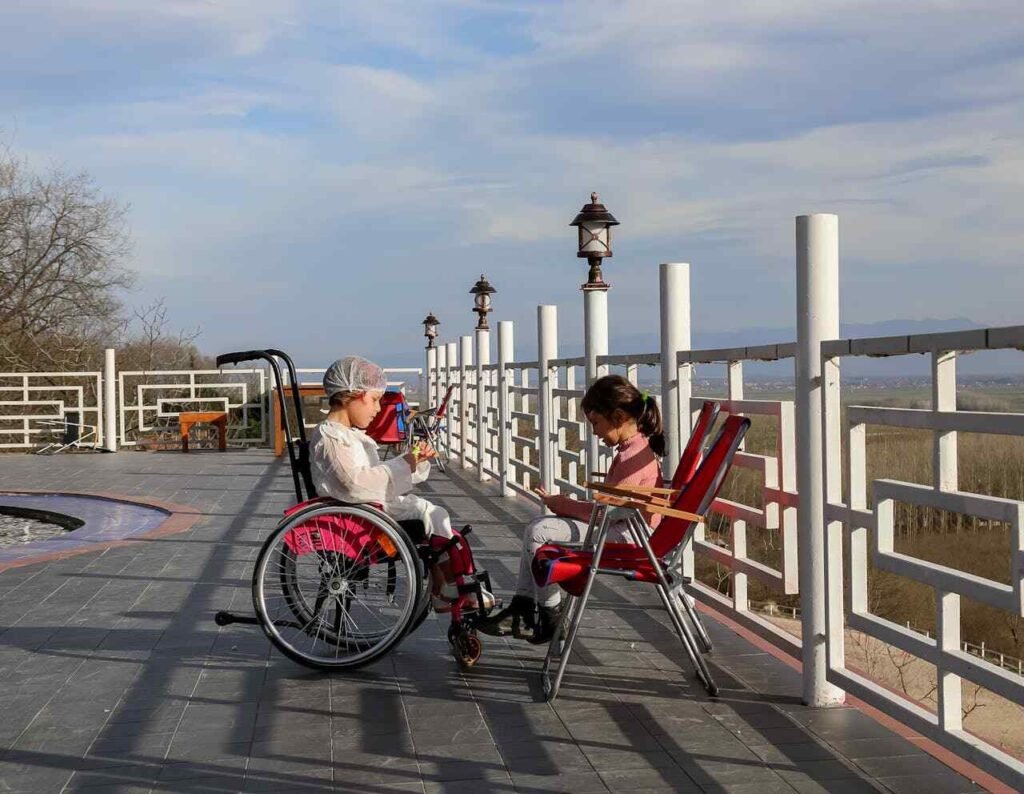
At the core is the ability to capture and process neural signals instantly. Sensors detect the tiny electrical impulses from muscles or nerves.
These signals are often messy and full of noise. Advanced algorithms clean them up, identify meaningful patterns, and translate them into commands the prosthetic can understand.
The faster and more accurate this process, the more seamless the movement feels.
Machine Learning Models
Machine learning makes real-time adaptation possible. Instead of fixed rules, the system uses models that learn from data.
Every time the user moves, the prosthetic records the signals and outcomes. The algorithm updates itself continuously, refining its understanding of what each signal means.
This makes the prosthetic smarter with use. It doesn’t just respond—it evolves.
Sensor Fusion
Real-time adaptation also benefits from multiple inputs. Muscle signals (EMG), motion sensors (IMUs), and even brain signals (EEG) can all feed into the system.
By combining these sources, the prosthetic gets a richer understanding of what the user intends. If one signal is weak, another can support it.
This redundancy creates stability, ensuring the prosthetic works reliably in all conditions.
Real-World Applications of Real-Time Neural Adaptation
Everyday Living
For most users, success with a prosthetic is measured not in labs, but in kitchens, offices, and homes. Real-time neural adaptation allows users to handle fragile items like eggs, grip tools with steady pressure, or carry bags without fear of dropping them.
This level of reliability restores independence. Small victories—like cutting vegetables without constant checking—turn into life-changing confidence.
Professional Settings
Workplaces often demand precision. A student taking notes, a carpenter holding a hammer, or a chef balancing delicate tasks all need seamless control.
With real-time adaptation, the prosthetic adjusts instantly to their intent. Whether applying force or moving delicately, the hand keeps up. This allows people not just to return to work, but to thrive in roles that once felt out of reach.
Sports and Recreation
Beyond daily living, many users want to enjoy hobbies—cycling, playing musical instruments, or even sports. These activities require fast adjustments and fluid motion.
Real-time adaptation makes this possible. The prosthetic learns from repeated patterns, predicting how the user wants to move. Over time, actions become smoother, bringing joy back to activities once abandoned.
User Experiences: Stories of Transformation
From Hesitation to Confidence
One young engineer told us how his first prosthetic left him frustrated. It worked only with rigid commands, forcing him to focus on every movement. He avoided using it in public, afraid of making mistakes.
With a real-time adaptive prosthetic, everything changed. The system learned his signals on the go. Mistakes became rarer, and movements grew natural. Soon, he was using it at work, typing quickly, and even demonstrating it proudly to his peers.
Confidence replaced hesitation.
A Mother’s Story
Another user, a mother of two, worried about cooking and holding her children. Her earlier prosthetic felt unpredictable—sometimes gripping too hard, other times too soft.
When she switched to a real-time adaptive device, she found reassurance. The hand adjusted instantly, responding gently with her kids and firmly with utensils. She said it gave her back her peace of mind.
For her, adaptation wasn’t about technology—it was about feeling like a mother again.
Returning to Craft
A tailor who lost his hand feared his career was over. Sewing requires steady, precise motions. A rigid prosthetic could never match the flow of his craft.
With a real-time adaptive prosthetic, he regained control. The system learned his fine motor patterns and adjusted continuously. Soon, he was back at his sewing machine, producing clothes with the same care as before.
This story shows that neural adaptation isn’t just about survival—it’s about restoring purpose.
Business Strategies for Clinics and Providers
Why Real-Time Adaptation Is a Differentiator
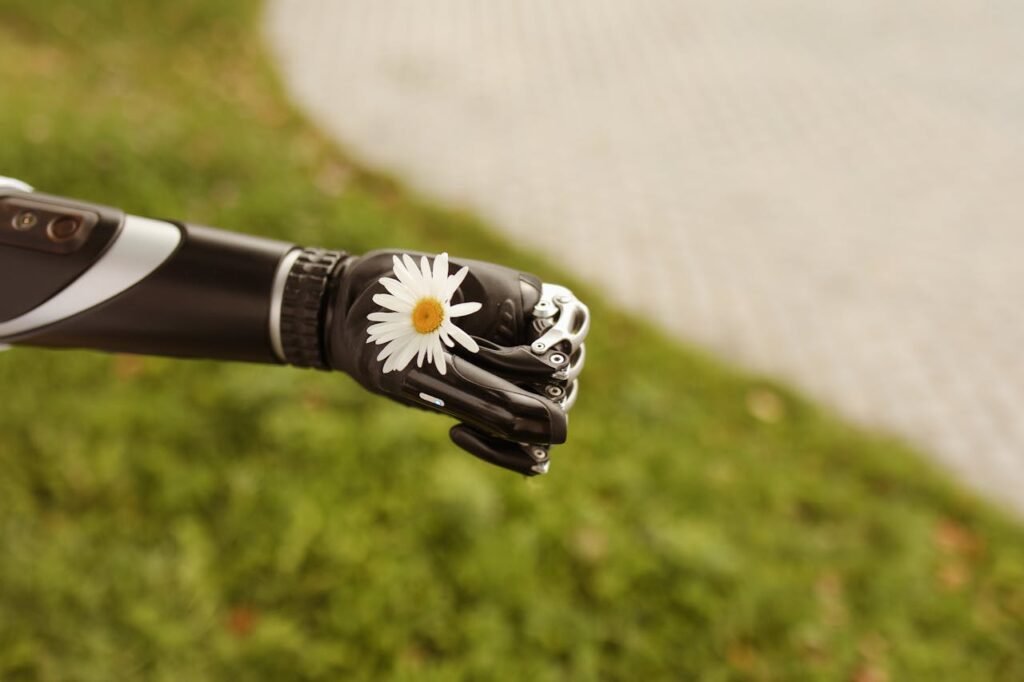
Most clinics still provide basic prosthetics focused on movement. Real-time adaptive systems go further, offering natural, seamless control.
For clinics, adopting these systems is a chance to stand out. They can market themselves as innovation leaders, offering patients not just functionality, but life-like movement.
Training as a Core Service
Adaptive systems need training for both users and therapists. Clinics that provide structured training programs—teaching how to interpret feedback and build trust—create better outcomes.
Training also strengthens relationships. Patients feel supported, which reduces abandonment rates and builds loyalty.
Tiered Options for Accessibility
Not every user can afford the most advanced system. Offering tiered models allows clinics to serve more people:
- Basic models with simple control
- Mid-range adaptive models
- Premium real-time adaptive systems with multi-signal input and feedback
This tiered approach ensures inclusivity while still highlighting innovation.
Building Long-Term Ecosystems
The future of prosthetics is not just devices—it’s ecosystems. Clinics that combine prosthetics with rehab apps, remote monitoring, and ongoing upgrades create continuous engagement.
This model not only improves patient outcomes but also builds sustainable business growth.
Rehabilitation Strategies with Real-Time Neural Adaptation
Early Training for Stronger Results
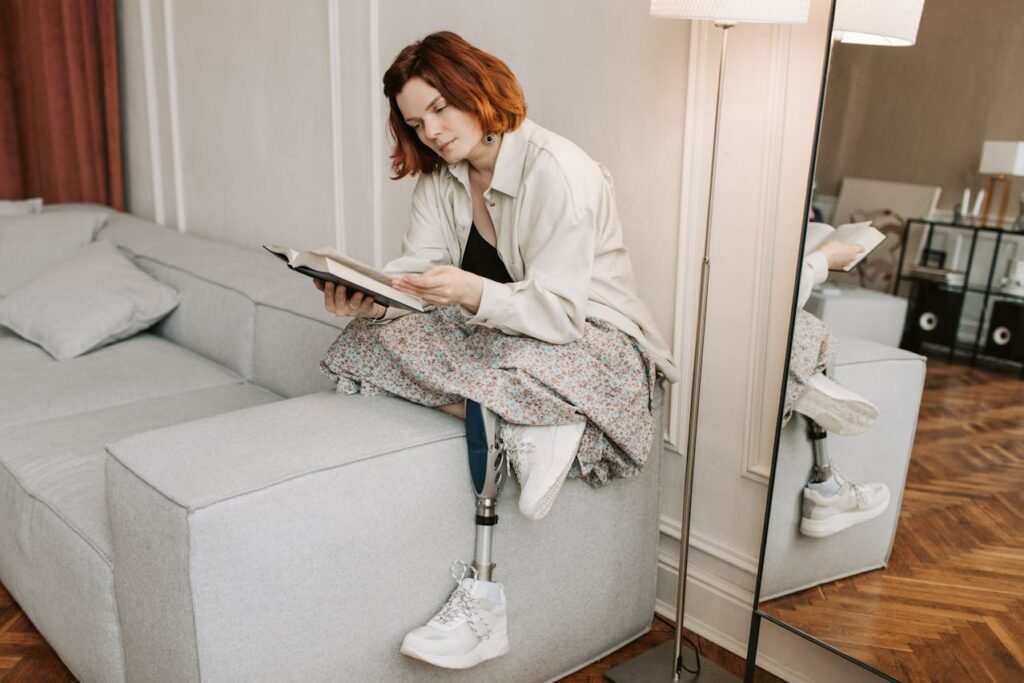
Rehabilitation begins the moment a prosthetic is fitted. In traditional systems, early training is slow and often frustrating, since users must learn strict control rules.
With real-time adaptive systems, training feels different. The prosthetic itself is learning alongside the user. When the brain sends a signal, the device adjusts instantly, and the brain quickly corrects its commands in response.
This mutual learning speeds up adaptation. Instead of weeks of confusion, many users start achieving functional control within days.
Making Practice Engaging
One challenge of rehab is keeping users motivated. Repetition without clear progress can feel discouraging. Real-time adaptation helps here, as users see improvements quickly—each session feels productive.
Adding digital tools like gamified exercises makes the process even more engaging. Imagine a training app where users must grip virtual objects with varying force. As they practice, the prosthetic fine-tunes its algorithms, while the user sharpens their control.
Rehab becomes not just necessary, but enjoyable.
The Therapist’s Role in Adaptive Training
Therapists are essential guides in the journey. With adaptive prosthetics, their role shifts from teaching rigid commands to helping users interpret feedback and trust the device.
They help users understand that mistakes are part of the learning process—for both the brain and the prosthetic. By framing rehab as a partnership, therapists build confidence and resilience.
Clinics that train their therapists in adaptive systems will see higher success rates and more satisfied users.
Emotional Well-Being and Adaptive Systems
Restoring Confidence in the Body
Amputation often leaves people feeling disconnected from their body. Prosthetics that require constant effort can reinforce that disconnection, reminding users that the limb is artificial.
Real-time adaptation bridges this gap. Because the prosthetic responds smoothly and naturally, users start to feel it as part of themselves.
This sense of ownership restores confidence. Instead of worrying about what they cannot do, users focus on what they can do again.
Reducing Anxiety in Daily Life
Without adaptive control, many users live with constant worry—dropping fragile objects, making mistakes in public, or struggling during social interactions.
Adaptive systems reduce this anxiety. The prosthetic behaves predictably, adjusting instantly to intent. Mistakes become rare. Users stop second-guessing themselves.
The result is not just better function, but peace of mind.
Rebuilding Identity
Perhaps the most profound impact is on identity. When movements feel natural, users stop thinking of their prosthetic as “a device I wear.” It becomes part of who they are.
This shift in identity is powerful. It brings dignity, belonging, and emotional healing. It helps people see themselves not as limited, but as whole again.
Scaling Real-Time Adaptive Systems for Broader Impact
Breaking the Cost Barrier

Globally, advanced adaptive prosthetics remain expensive, often priced beyond the reach of most families. In India, this challenge is even greater.
At Robobionics, we address this by manufacturing locally. By producing most components in India, we reduce costs while maintaining global standards.
This approach makes cutting-edge real-time adaptive technology accessible to thousands who might otherwise never experience it.
Building Strong Clinic Partnerships
Scaling requires partnerships with clinics and hospitals. By training clinicians, offering demo devices, and supporting with service infrastructure, we make adoption easier.
When providers see that adaptive systems lead to higher satisfaction and reduced abandonment, they naturally choose to recommend them.
Tiered Solutions for Different Needs
Not every user needs the most advanced prosthetic immediately. Offering tiered solutions allows broader adoption:
- Entry-level devices with simple control
- Mid-level devices with partial adaptation
- Premium devices with full real-time adaptation and multi-signal input
This ensures accessibility while creating pathways for users to upgrade over time.
Awareness and Education
Many users, families, and even therapists don’t yet know what real-time neural adaptation means. Education is essential.
By sharing user stories, hosting workshops, and offering live demonstrations, providers can show the difference firsthand. Seeing the hand adapt in real time convinces people more than any technical explanation.
Strategic Business Insights for Real-Time Adaptive Prosthetics
Why Clinics Must Evolve with Technology
The prosthetics industry is no longer about offering a device that simply restores motion. Users today expect more—they want function that feels natural, reliable, and seamless. Real-time neural adaptation makes that possible, but it also requires a new way of thinking for clinics and providers.
Clinics that continue to rely on older models risk falling behind. Patients are increasingly aware of new technologies and actively seek out providers who offer advanced solutions. If a clinic cannot meet those expectations, patients will look elsewhere.
Actionable Advice: Position your clinic as a pioneer. Showcase that you provide not just prosthetics, but prosthetics that adapt in real time. This instantly elevates your reputation and attracts forward-thinking patients.
Building Trust Through Transparency
Adopting advanced technology is not enough—patients and their families need to trust it. Too often, providers focus on features but fail to explain how those features translate into everyday benefits.
Real-time adaptation can sound complicated, but the message to patients should be simple: “This prosthetic learns with you.”
Actionable Advice: Train your staff to communicate benefits in plain language. Replace jargon with relatable examples. Instead of saying, “Our device uses adaptive algorithms,” say, “This hand adjusts as you use it, so it feels more natural every day.”
Simple communication builds trust, and trust drives adoption.
Offering Demonstrations as a Differentiator
Patients often hesitate to invest in advanced prosthetics without experiencing the difference firsthand. Demonstrations are the most powerful way to show what real-time adaptation can do.
When a patient sees the prosthetic respond instantly to their signals—or better, tries it themselves—they understand its value in a way no brochure or explanation can match.
Actionable Advice: Set up regular demo days at your clinic. Invite patients, families, and even rehabilitation professionals to witness the technology in action. Encourage hands-on trials. These sessions don’t just inform—they inspire.
Creating Training Ecosystems
Real-time adaptive prosthetics require training—not because they are difficult, but because both the brain and the prosthetic must learn together. Clinics that provide structured, ongoing training see better outcomes and lower abandonment rates.
But training should not stop at the fitting stage. Continuous support ensures that users keep improving and that the prosthetic continues adapting to their lifestyle.
Actionable Advice: Develop training ecosystems. This could include in-clinic sessions, app-based guidance, and scheduled follow-ups. Frame training not as a burden, but as part of the value you offer. A clinic that stays with patients through the journey creates loyalty that lasts.
Tiered Service Models for Wider Reach
Not every patient can afford the most advanced device, but that should not mean they are excluded from progress. Offering tiered options allows clinics to serve a wider audience while still positioning themselves as leaders in innovation.
A patient might start with a mid-level model and upgrade later as their confidence, needs, and finances grow. This flexibility ensures inclusivity while maintaining growth potential.
Actionable Advice: Design a three-tier model—basic, mid-range, and premium. Clearly explain the benefits of each tier. Ensure that even the entry-level device has adaptive features, so patients experience value regardless of budget.
Building Partnerships for Scale
Scaling advanced prosthetics cannot be done alone. Clinics need to collaborate with manufacturers, rehabilitation centers, NGOs, and insurers.
Partnerships ensure that the technology reaches more people, especially in regions where affordability and awareness remain challenges. They also provide opportunities for funding, grants, and research collaborations.
Actionable Advice: Actively seek partnerships beyond your immediate industry. For example, work with NGOs focused on disability empowerment, or insurers interested in innovative healthcare solutions. These relationships expand reach while reducing financial barriers for patients.
Using Data as a Growth Tool
One advantage of real-time adaptive systems is that they generate valuable data—on usage patterns, success rates, and patient satisfaction. This data can be a powerful growth tool if clinics know how to use it.
Tracking outcomes helps providers improve training, personalize care, and demonstrate value to funders. Data-backed results also strengthen credibility with patients and families.
Actionable Advice: Implement a system to collect and review user data regularly. Share success metrics openly. For instance, show how real-time adaptation reduced abandonment rates or improved rehabilitation times. Numbers add weight to your story.
Storytelling as Strategy
While data builds credibility, stories build connection. Patients don’t just want proof—they want to know how the technology has changed lives like theirs.
Real-time adaptation generates powerful stories: a teacher writing again without fatigue, a farmer handling tools with ease, a parent hugging their child confidently. These stories highlight what matters most—not the technology itself, but the human outcomes.
Actionable Advice: Collect patient stories (with consent) and share them across your website, brochures, and social media. Train your staff to use these stories in consultations. Stories inspire hope, and hope is what makes patients take the leap.
Preparing for Tomorrow
The prosthetics field is evolving quickly. Real-time neural adaptation is just the beginning. Predictive control, richer haptic feedback, and multi-signal fusion are on the horizon.
Clinics that embrace innovation today will be ready for these advancements tomorrow. Those that resist change will struggle to catch up.
Actionable Advice: Create a roadmap for your clinic. Decide how you will integrate new technologies over the next three to five years. This ensures you stay ahead of the curve and position yourself as a long-term leader.
The Future of Real-Time Neural Adaptation
From Reactive to Predictive
Today’s systems are reactive—they adjust in real time as signals arrive. The next leap will be predictive.
By analyzing repeated patterns, adaptive algorithms will begin to anticipate movements before the full signal is even sent. Imagine reaching for a glass—the prosthetic starts adjusting grip before your brain finishes sending the command.
This will make movements even smoother, reducing delay to the point where the prosthetic feels almost invisible.
Expanding the Sensory Experience
Feedback today is often limited to vibrations or pressure. In the future, haptic technology will provide richer sensations—texture, temperature, even weight distribution.
Combined with real-time neural adaptation, this will create prosthetics that don’t just move seamlessly, but feel seamlessly integrated with the body.
Multi-Input Fusion
Prosthetics will no longer rely on a single source of input. Muscle signals (EMG), brain signals (EEG), motion sensors (IMU), and even eye-tracking could all feed into the system.
Real-time neural adaptation will merge these signals instantly, ensuring stability in every condition. If one signal weakens, others will step in, creating reliability that users can trust anywhere.
Integration With Digital Ecosystems
Prosthetics will also connect to digital ecosystems. Imagine your hand syncing with an app that tracks performance, offers personalized exercises, and even updates algorithms remotely.
This ecosystem approach will turn prosthetics from standalone tools into connected companions that grow smarter over time.
Business Opportunities in Adaptive Bionics
Standing Out in a Crowded Market
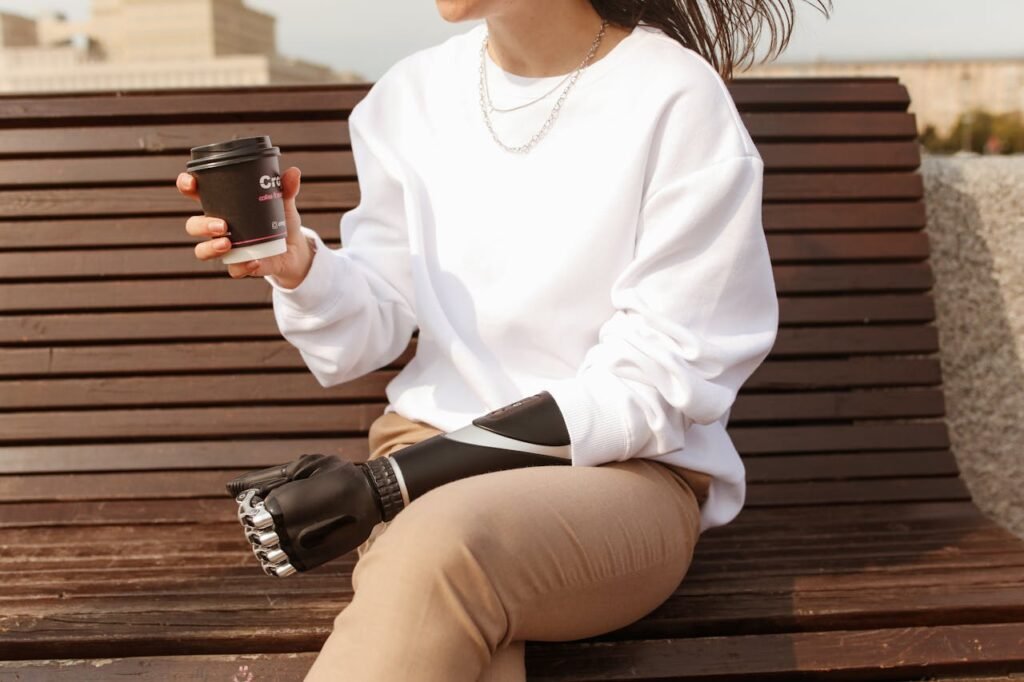
Most clinics still focus on conventional prosthetics. Offering real-time adaptive devices positions providers as leaders in innovation. Patients recognize the difference, and word spreads quickly.
This differentiation not only attracts new patients but also builds long-term reputation.
Creating Loyalty Through Support
Adaptive systems require training, follow-ups, and occasional adjustments. Clinics that provide ongoing support become partners in the user’s journey.
This builds loyalty, reduces abandonment, and increases referrals. It also opens pathways for recurring revenue through service packages and upgrades.
Making Innovation Accessible
Affordability remains a key barrier. Clinics and providers that offer financing options, NGO partnerships, or tiered pricing models will expand adoption.
This is not just good business—it’s good impact. Every accessible prosthetic means a life restored.
Storytelling as Growth Strategy
Numbers and features don’t inspire trust—stories do. Sharing real stories of people whose lives changed with adaptive systems is the most powerful way to build credibility.
From a teacher writing again to a parent hugging without fear, these stories show not just what the technology does, but why it matters.
Conclusion: Seamlessness as the New Standard
Real-time neural adaptation is not just another step in prosthetics—it is the foundation of a new era.
It takes prosthetics from mechanical tools to living companions. It transforms rigid movements into natural flow. It restores not just function, but confidence, dignity, and identity.
For users, this means freedom—freedom to move, to work, to connect, and to live without hesitation.
For businesses, it means opportunity—opportunity to lead, to grow, and to be part of something deeply human.
At Robobionics, we believe seamless movement should not be a luxury. It should be a standard. And through real-time neural adaptation, we are bringing that standard to life—right here in India.
If you are ready to experience movement that feels effortless, book a free demo today:
Because when the brain and prosthetic move as one, life becomes seamless again.



